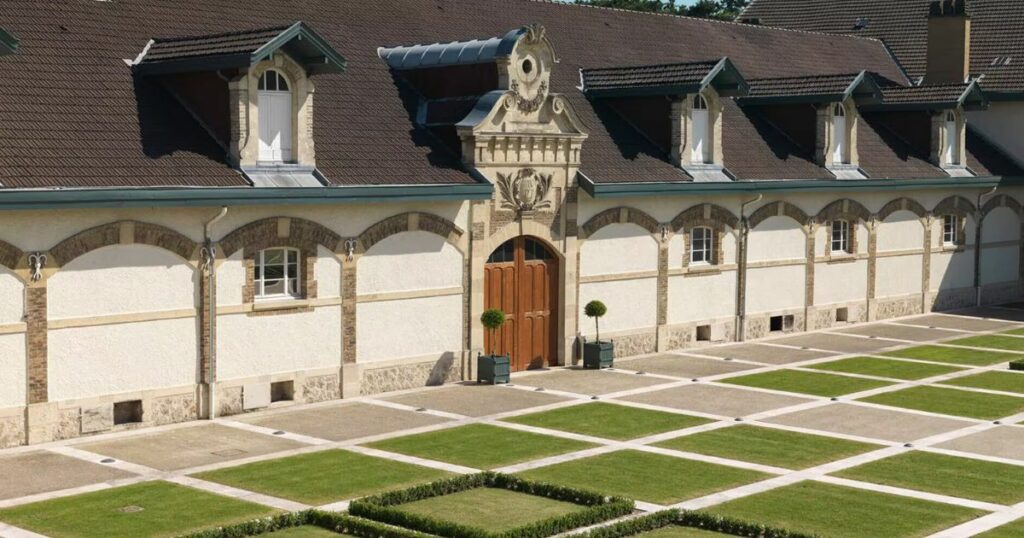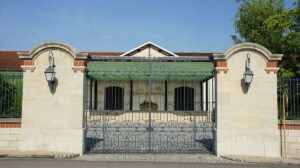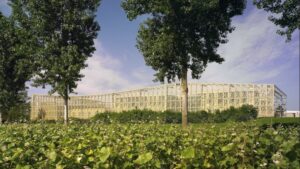The Founding of Maison Ruinart
Maison Ruinart, the world’s oldest champagne house, was founded in 1729 by Nicolas Ruinart. The journey began with the vision of Nicolas’ uncle, Dom Thierry Ruinart, a Benedictine monk who foresaw the potential of sparkling wines from the Champagne region. Dom Thierry’s insights and enthusiasm for the wine trade inspired Nicolas to establish Maison Ruinart, marking the beginning of an enduring legacy.
Early Years and Expansion
In its early years, Maison Ruinart focused on producing high-quality champagne, quickly gaining a reputation for excellence. The initial operations were modest, but the demand for Ruinart’s champagne grew rapidly. By the mid-18th century, the house had expanded its production and distribution, establishing a strong presence in both domestic and international markets. The house’s commitment to quality and innovation set it apart from its competitors.
The Role of Chardonnay in Ruinart’s Champagne
One of the defining characteristics of Ruinart’s champagne is its use of Chardonnay grapes. This preference dates back to the early years of the house and has continued to shape its identity. Chardonnay, known for its elegance and finesse, imparts a unique freshness and luminosity to Ruinart’s champagnes. The house’s vineyards, located primarily in the Côte des Blancs and Montagne de Reims, provide the perfect terroir for cultivating this prized grape variety.
Innovations and Milestones
Throughout its history, Maison Ruinart has been at the forefront of innovation in the champagne industry. In the 18th century, the house introduced the concept of rosé champagne, which was initially created by adding elderberry juice to the blend. This innovation was a significant milestone and contributed to the diversification of Ruinart’s offerings.
In 1768, Maison Ruinart became one of the first champagne houses to acquire chalk cellars, known as crayères, in Reims. These ancient Roman cellars, carved deep into the chalk subsoil, provided the ideal conditions for aging champagne. The crayères, with their constant temperature and humidity, became an integral part of Ruinart’s production process and remain a symbol of the house’s heritage.
Surviving the Turbulent Times
The 19th and early 20th centuries brought significant challenges to Maison Ruinart. The French Revolution, phylloxera epidemic, and both World Wars posed threats to the champagne industry. Despite these adversities, Ruinart managed to survive and thrive. The house’s resilience can be attributed to its strong leadership, commitment to quality, and adaptability in the face of changing circumstances.
During World War I, the crayères served as shelters for soldiers and civilians, protecting them from the ravages of war. After the war, the house focused on rebuilding and restoring its vineyards and cellars. The post-war period marked a new era of growth and prosperity for Ruinart, solidifying its reputation as a premier champagne producer.
Modern Era and Global Recognition
In the modern era, Maison Ruinart has continued to build on its rich heritage while embracing contemporary advancements. The house’s dedication to sustainability and environmental stewardship has become a cornerstone of its philosophy. Ruinart has implemented various initiatives to reduce its carbon footprint, promote biodiversity, and ensure the long-term health of its vineyards.
Today, Ruinart is globally recognized for its exceptional champagnes and its commitment to artistry and elegance. The house collaborates with contemporary artists, commissioning works that reflect its values and enhance its brand identity. These collaborations have further cemented Ruinart’s position as a leader in the world of luxury champagne.
Iconic Champagnes of Ruinart
Several champagnes have become iconic representations of Maison Ruinart’s excellence. The Ruinart Blanc de Blancs, made exclusively from Chardonnay grapes, is celebrated for its purity, elegance, and vibrant acidity. The Ruinart Rosé, with its delicate pink hue and complex flavors, is another standout, showcasing the house’s mastery of rosé champagne.
The prestige cuvée, Dom Ruinart, named in honor of the visionary monk, represents the pinnacle of Ruinart’s craftsmanship. Produced only in exceptional vintages, Dom Ruinart exemplifies the house’s dedication to quality and its ability to create champagnes of unparalleled depth and sophistication.
The Legacy of Maison Ruinart
The legacy of Maison Ruinart is one of innovation, resilience, and an unwavering commitment to excellence. As the oldest champagne house in the world, Ruinart has played a pivotal role in shaping the history and development of champagne. Its rich heritage, combined with a forward-looking approach, ensures that Ruinart will continue to be a symbol of luxury and refinement for generations to come.
The story of Maison Ruinart is not just a chronicle of a champagne house; it is a testament to the enduring appeal of champagne itself. From its humble beginnings to its current status as a global icon, Ruinart’s journey reflects the passion, creativity, and dedication that define the world of fine champagne.
𐡸 𐡸 𐡸 𐡸 𐫱 𐡷 𐡷 𐡷 𐡷
Read also: 10 of the oldest Champagne houses that still exist
Frequently asked questions
Maison Ruinart is unique for being the oldest champagne house, founded in 1729. Its commitment to using Chardonnay grapes, its historical crayères cellars, and its tradition of innovation and artistry set it apart from other producers.
The crayères are ancient chalk cellars that provide the perfect environment for aging champagne. Their consistent temperature and humidity levels help develop the distinctive characteristics of Ruinart’s champagnes, contributing to their quality and longevity.
Ruinart is dedicated to sustainability through various initiatives, including reducing its carbon footprint, promoting biodiversity, and implementing eco-friendly viticulture practices. These efforts ensure the long-term health of its vineyards and the surrounding ecosystem.
Ruinart Blanc de Blancs is known for its purity, elegance, and vibrant acidity. Made exclusively from Chardonnay grapes, it features floral and citrus notes, with a bright, fresh finish that exemplifies the house’s style.
Dom Thierry Ruinart was a Benedictine monk and the uncle of Nicolas Ruinart, the founder of Maison Ruinart. His vision and enthusiasm for the potential of sparkling wines from the Champagne region inspired Nicolas to establish the champagne house, laying the foundation for its enduring legacy.



